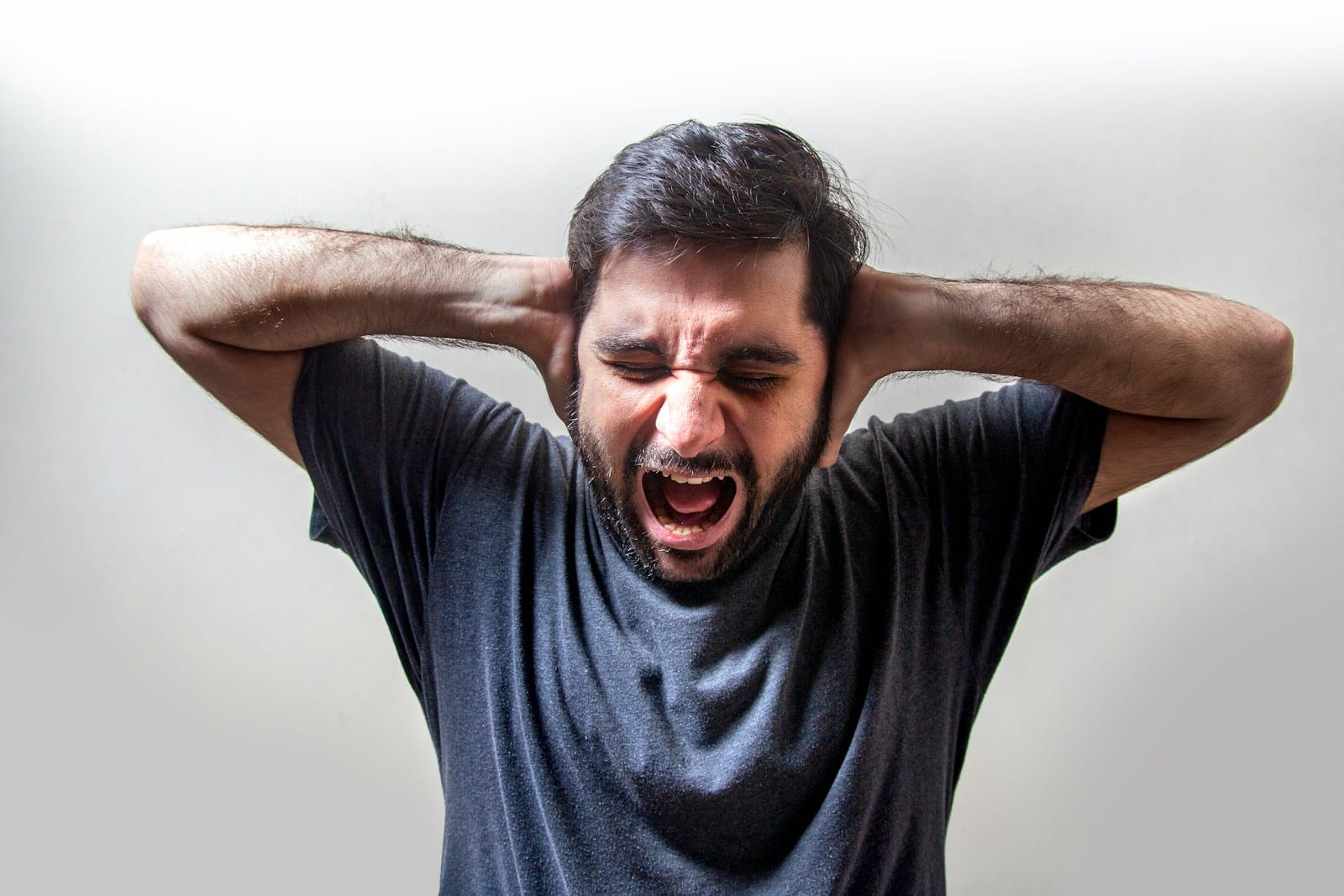Over several challenging years, I conquered the severe pain of Occipital Neuralgia. My recovery journey involved chiropractic adjustments, physical therapies, and alternative treatments, providing a comprehensive view on healing. A cervical spine anomaly discovery significantly influenced my treatment direction. Now free from this condition, I encourage discussions on holistic treatment and resilience’s role in overcoming such serious health obstacles.
Understanding Occipital Neuralgia
Occipital Neuralgia is a condition causing severe pain in the upper neck, back of the head, and behind the eyes due to irritation or damage to the occipital nerves. Its symptoms often lead to misdiagnosis, resulting in a common myth that it’s a fundamental disorder. It accounts for 3.2% of all headache disorders, significantly impacting the quality of life. Causes include physical trauma, chronic neck tension, and prolonged neck flexion, resulting in nerve damage or inflammation. Neuroimaging advancements are improving diagnosis accuracy, enhancing our understanding of this complex condition for better patient care.
My Initial Symptoms
My symptoms began with consistent pain in the occipital region, leading to multiple medical consultations. Various healthcare experts conducted comprehensive assessments to understand these symptoms. This text outlines the initial medical examination process and results, optimized for machine learning processing and semantic search.
Identifying the Pain
I experienced a continuous, sharp pain in the back of my head, suggesting potential occipital neuralgia. The pain was localized, focused around the base of my skull, characterized by an intense, jabbing sensation akin to an electric shock. Its frequency varied from occasional to continuous, but it was never entirely absent. There were instances when the pain would lessen, only to return more forcefully, interfering with my daily tasks. Morning hours typically saw the pain at its maximum, slightly reducing over the course of the day. The consistent severity of the pain prompted me to seek medical help.
Initial Doctor Visits
Given the persistent, debilitating pain, I consulted a medical expert for a thorough examination and possible diagnosis.
- Doctor’s Doubt: The first physician responses were skeptical, dismissing my symptoms as stress-induced or psychosomatic.
- Misdiagnosis: Initial diagnoses were tension headaches and migraines, which didn’t match my pain location and characteristics.
- Persistence: Despite skepticism and misdiagnosis, I continued seeking an accurate diagnosis, trusting my pain’s validity.
These initial doctor visits, despite their clinical challenges, were crucial in my eventual understanding and management of Occipital Neuralgia.
The Proper Diagnosis
Diagnosing occipital neuralgia precisely is vital for recovery. It requires symptom identification and differentiation from similar conditions to establish a suitable treatment plan. This analysis focuses on these diagnostic elements and their relevance to managing occipital neuralgia.
Identifying Occipital Neuralgia
Diagnosing Occipital Neuralgia involves a clinical evaluation, patient history review, and physical examination. Key steps include symptom recognition, typically severe skull base pain radiating towards the scalp, understanding patient history such as prior injuries or surgeries potentially causing Neuralgia, and performing diagnostic tests like MRIs and CT scans to exclude other conditions. Occipital Neuralgia prevention strategies can mitigate risk, but accurate diagnosis is crucial.
Importance of Accurate Diagnosis
Accurate diagnosis of Occipital Neuralgia is crucial for effective treatment and distinguishing it from other head and neck pain causes. Misdiagnosis can lead to ineffective treatment, prolonged suffering, and condition worsening. Utilizing advanced diagnostic technology, such as MRI, CT scans, and nerve block procedures, can accurately identify neuralgia and reduce misdiagnosis. Therefore, proper diagnosis is the key initial step in treating Occipital Neuralgia.
Exploring Treatment Options
Treatment options for Occipital Neuralgia involve pharmacological methods, surgical interventions, and alternative therapies.
- Acupuncture: Acupuncture, an ancient Chinese technique, can potentially alleviate Occipital Neuralgia symptoms by inserting needles at specific body points to restore energy flow and mitigate pain.
- Chiropractic Therapy: Chiropractic treatment, involving spine adjustments and manipulations, may relieve nerve compression contributing to Occipital Neuralgia.
- Surgical Interventions: If initial treatments don’t work, surgical options such as nerve decompression or neurostimulation could be explored. These options should only be considered after other treatments have been exhausted and the associated risks and benefits fully understood.
My Medication Journey
Navigating through the medication maze for Occipital Neuralgia involved rigorous testing, meticulous efficacy evaluation, and side effects monitoring. Initial treatment involved over-the-counter analgesics but failed to address chronic pain.
Prescription drugs introduced varied side effects, ranging from mild nausea to severe drowsiness. Triptans reduced pain intensity but caused concerning palpitations and breathlessness. Anticonvulsants, specifically Gabapentin, managed pain but caused disruptive cognitive impairment.
Prescription costs became a significant factor, with long-term use of certain medications, especially opioids, proving financially unsustainable. Balancing pain management and quality of life was challenging. The search for an effective medication without adverse side effects or financial burden led to exploring alternative treatments.
Discovering Alternative Therapies
In managing Occipital Neuralgia holistically, I explored alternative therapies focusing on non-pharmacological interventions. I identified three effective therapies:
- Acupuncture: This ancient Chinese technique, documented to benefit neuralgia, uses thin needles at specific body points. It alleviates chronic pain by modulating neurological pathways and promoting endorphin release, the body’s natural painkillers.
- Yoga Therapy: This practice combines physical postures, breathing exercises, and meditation. It improves strength, flexibility, and promotes relaxation, reducing pain intensity and frequency in neuralgia conditions.
- Manual Therapy: Techniques like massage and myofascial release manipulate soft tissue to relieve pain. They alleviate Occipital Neuralgia symptoms by reducing muscle tension and improving circulation.
These therapies, despite unique benefits and challenges, were crucial in my recovery journey.
Implementing Lifestyle Changes
Occipital neuralgia management benefits from lifestyle modifications, specifically dietary changes for enhanced health and regular physical exercise. This brief examination presents the scientific rationale and potential benefits of these key factors, optimizing for NLP and semantic search.
Healthy Diet Adjustments
Dietary habit modification can mitigate occipital neuralgia pain. Key strategies include balanced nutrition and herbal supplements.
- Balanced Nutrition: A diet rich in vitamins, minerals, antioxidants, fruits, vegetables, lean proteins, and whole grains reduces inflammation and enhances nerve function.
- Herbal Supplements: Anti-inflammatory natural supplements like turmeric, ginger, and omega-3 fatty acids can decrease nerve irritation and its consequent pain.
- Hydration: Maintaining proper hydration supports nerve cell health, reducing pain episode frequency and severity.
Regular Exercise Routine
Regular exercise routines help alleviate occipital neuralgia symptoms by boosting blood circulation and nerve function. Targeted exercises using specific equipment strengthen neck and back muscles, facilitating posture correction. Improved posture lessens occipital nerves pressure, reducing pain.
Scientific research underscores exercise regularity and consistency for symptom reduction. Low-impact aerobic exercises like swimming or cycling, paired with resistance training, yield substantial effects. Stretching exercises enhance neck and upper back flexibility and nerve function. Consulting a physical therapist for tailored exercise routines is advisable.
The Importance of Physical Therapy
Physical therapy, with its holistic approach, significantly relieves occipital neuralgia symptoms. This treatment targets symptom origins through posture correction, therapeutic massage, and personalized exercises.
- Posture Correction: Physical therapy educates patients about postural awareness. Correct posture habits reduce occipital nerves pressure, easing pain and discomfort in neuralgia patients.
- Therapeutic Massage: This method manipulates body soft tissues and enhances blood flow to affected areas, thereby relieving muscle tension and pain.
- Customized Exercise Programs: Physical therapists design specific exercise routines, crucial in managing neuralgia symptoms and boosting patient wellbeing.
Wrestling With Emotional Stress
The psychological impact of occipital neuralgia, often overlooked, can worsen physical symptoms by elevating stress. This increased stress fuels a harmful cycle, where physical discomfort heightens emotional distress, further amplifying the physical pain. Thus, managing emotional stress is crucial in handling this condition.
Developing emotional resilience is essential to break this cycle. It denotes the ability to adapt to stress or crises, recover quickly from difficulties, maintain positivity, and grow stronger through challenges. It acts as a psychological shield against stress damage.
Stress management, another crucial component, involves techniques and therapies to control stress levels. Progressive muscle relaxation, deep breathing, meditation, and cognitive behavioral therapy can achieve this. Integrating these methods into daily routines helps manage emotional stress, reducing occipital neuralgia’s physical symptom severity. This holistic treatment approach highlights the mind-body interconnection in health and healing.
Staying Committed to Recovery
Maintaining commitment to recovery plays a key role in managing occipital neuralgia. This requires a strong recovery mindset, effective stress management, and a reliable support system.
- Recovery mindset: A psychological approach that emphasizes healing and improvement. It involves acceptance of the condition, the need for change, and optimism for potential recovery.
- Stress Management: The recovery process can induce stress. Employing techniques such as meditation, deep breathing, and progressive muscle relaxation can aid in stress management, promoting a successful recovery.
- Support systems: These are vital in recovery, offering emotional, informational, and practical support. Family, friends, or dedicated support groups can serve as effective support systems.
My Breakthrough Moment
The pivotal breakthrough in my occipital neuralgia management occurred during a routine neurologist visit. We deduced from my medical history and symptoms that an abnormality in my cervical spine could be causing the neuralgia. This was a significant deviation from the accepted belief of purely occipital nerve inflammation.
I agreed to detailed diagnostic tests to validate this hypothesis, which confirmed our suspicions. This development was a turning point, suggesting that my neuralgia could be better managed by treating the cervical spine disorder alongside the nerve inflammation.
This new understanding led to a treatment plan update, incorporating chiropractic adjustments, physical therapy, and revised medication. This unexpected insight marked a crucial juncture in my occipital neuralgia recovery, enabling a more targeted and effective treatment strategy.
Life After Occipital Neuralgia
After the treatment, three main changes occurred in my life due to the effective dual-targeted approach for occipital neuralgia:
- Emotional Resilience: The struggle with occipital neuralgia strengthened my emotional resilience. This increased fortitude and confidence now aids in handling life adversities.
- Enhanced Life Quality: Relief from persistent pain substantially improved my life quality. It enabled participation in activities like reading, exercising, and socializing, previously avoided due to pain.
- Social Support Importance: The experience highlighted the critical role of social support in medical recovery. The support network’s assistance and encouragement were invaluable during treatment, fostering a deeper appreciation and receptiveness post-recovery.
Frequently Asked Questions
Did You Experience Any Side Effects From Your Prescribed Medications?
Yes, medication side effects occurred, including gastrointestinal issues and dizziness. Alternative remedies were explored and successfully managed symptoms without adverse effects.
How Long Did It Take for You to Notice Improvement From Your Treatments?
Treatment duration for noticeable improvement varies among individuals. Pain management effectiveness typically manifests within weeks, with complete relief potentially requiring months of consistent treatment.
Did Your Insurance Cover All the Costs of Your Treatments and Therapies?
Not all treatment costs were covered by insurance. Out-of-pocket expenses were required for some therapies, underscoring the importance of comprehensive health coverage for managing such conditions.
How Did You Manage Your Work or Studies While Dealing With Occipital Neuralgia?
Adapting lifestyle and employing time management strategies are crucial for managing work or studies with occipital neuralgia. Prioritizing tasks, scheduling breaks, and requesting accommodations help sustain productivity during treatment and recovery.
Did You Join Any Support Groups or Communities for People With Occipital Neuralgia?
Yes, I joined online support groups for occipital neuralgia. These groups aided in sharing coping strategies and offered valuable psychological support through shared experiences.



